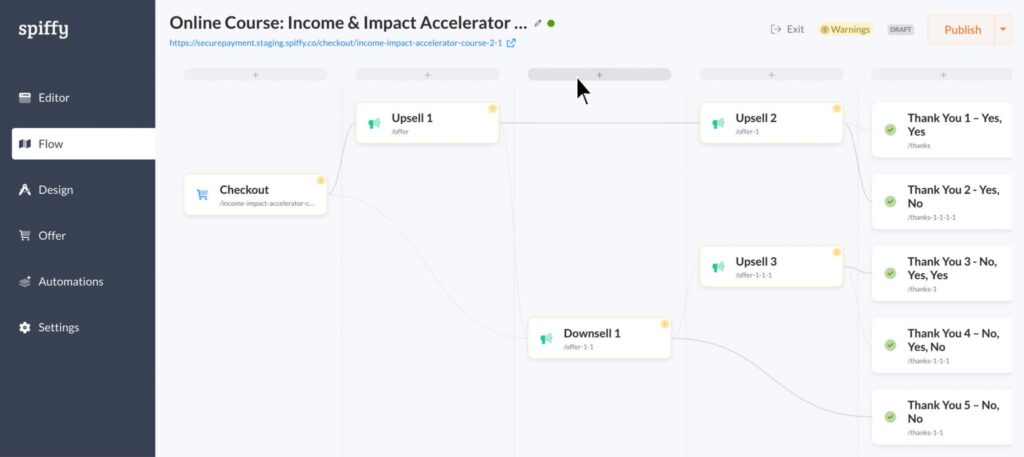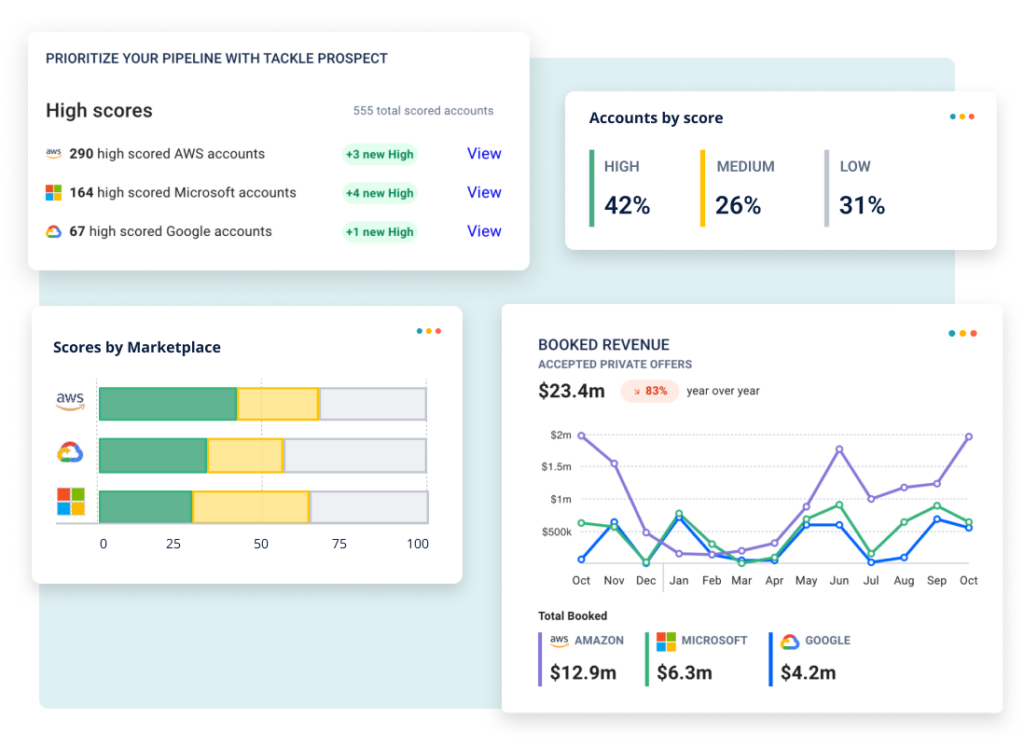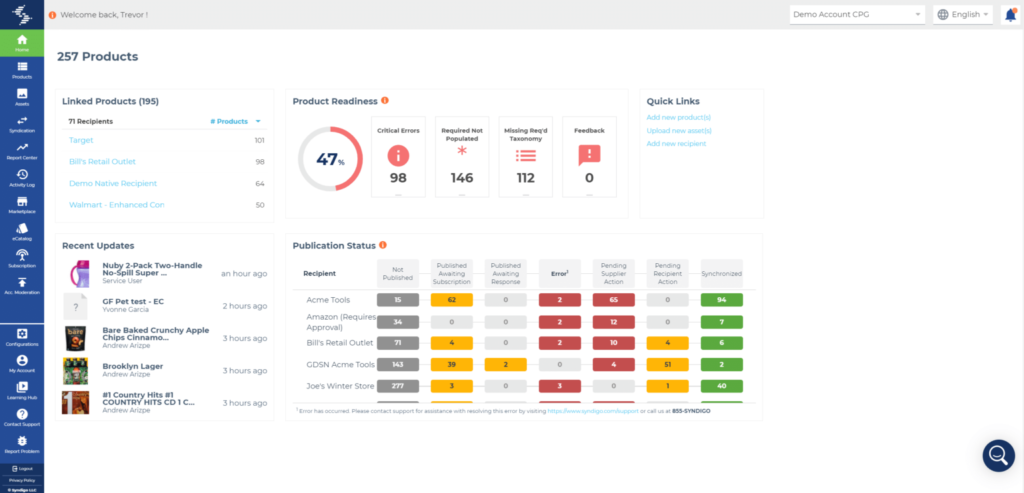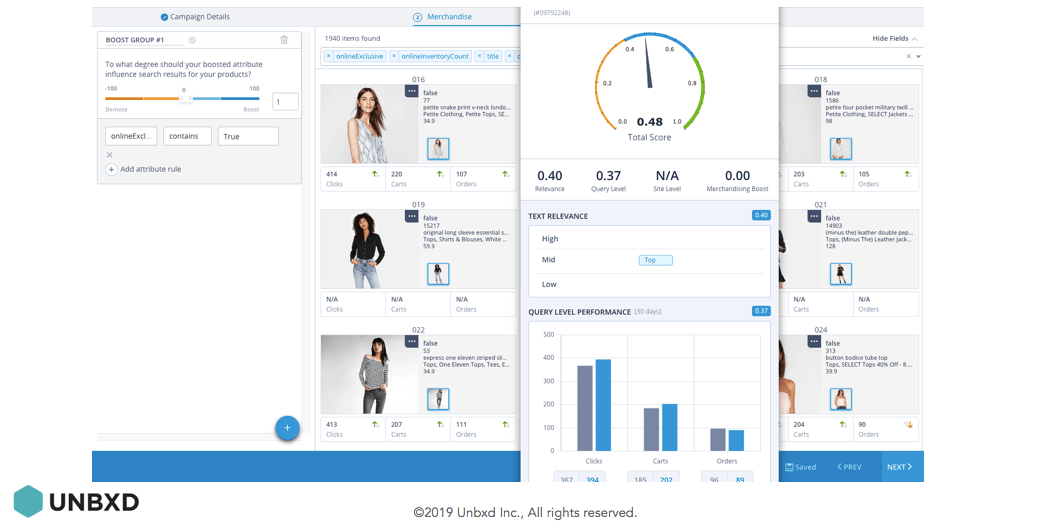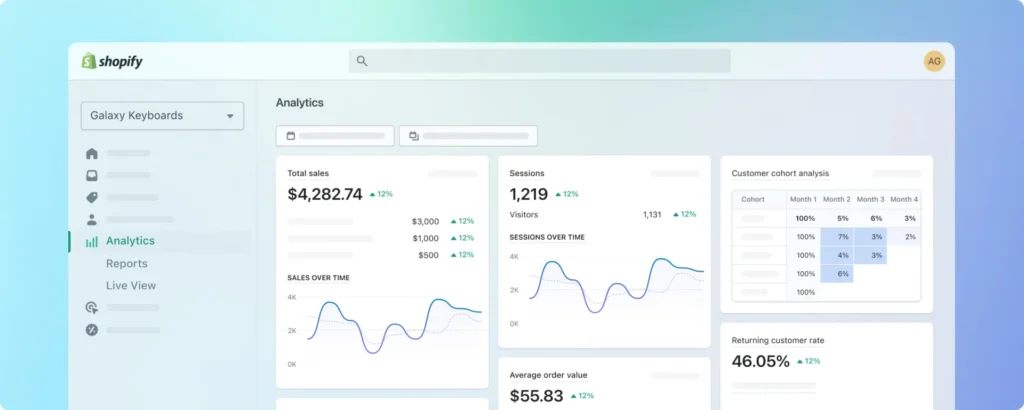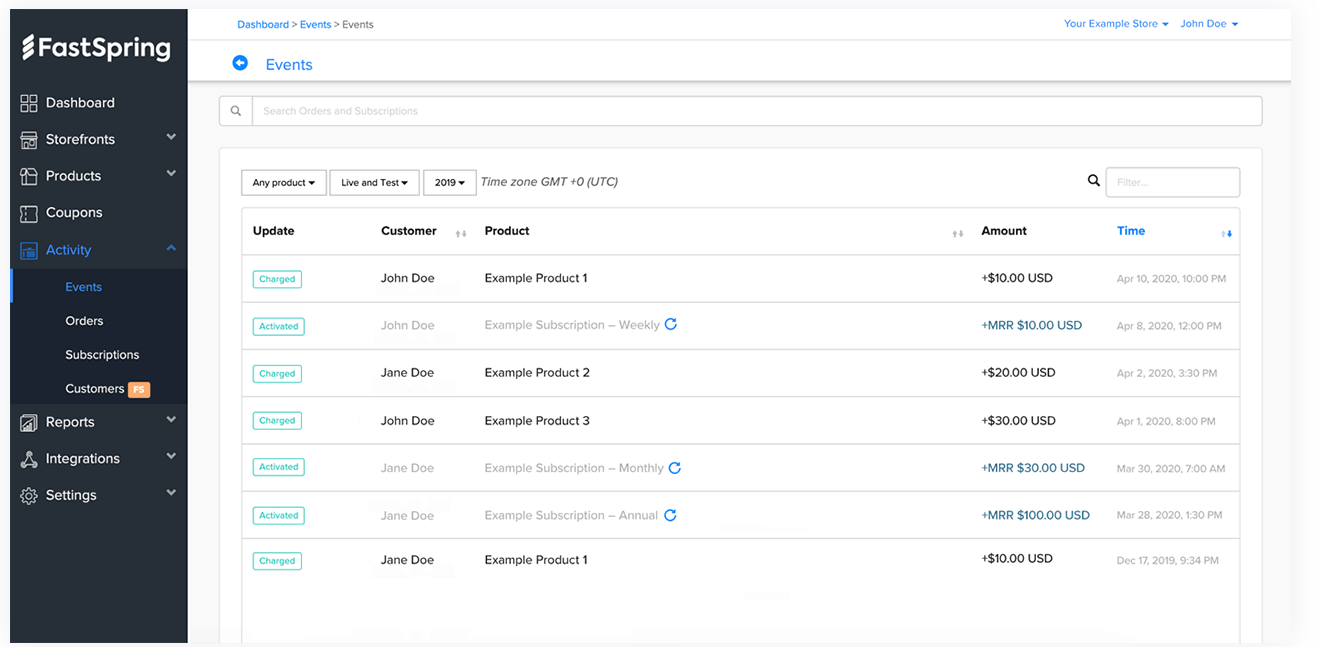
Implementing ecommerce software can be a great way to save time and resources in your business. There is a lot to handle when you have an online store: uploading products, writing descriptions, managing sales, and invoicing are just a small fraction of the whole flow.
So you need digital tools that can optimize your experience and offer a streamlined work schedule to be fully productive. So many processes can benefit from specific software to automate steps and reduce the time you would spend filling up endless spreadsheets and other archaic methods.
That’s why in this guide, you are going to learn how to make smart choices with your ecommerce software and even explore some tools in each category necessary to run your online business. Let’s jump right into it.
What is ecommerce software?
Ecommerce software refers to tools that help ecommerce businesses manage their operations, get rid of repetitive tasks, and maximize their resources. Companies of all sizes can benefit from this kind of software, enabling them to easily manage products and inventory, handle finances, and everything else required to fulfill orders and manage their online business.
However, not every company can afford to build their platform from scratch. But don’t worry, there are several software solutions for ecommerce software that work perfectly for small and medium-sized businesses to grow their sales and productivity.
How to choose the best software for your ecommerce?
Yes, there are thousands of ecommerce tools available in the market. So it’s important to analyze each one’s cost, benefits, specialized tools and where they might help your workflow before you decide.
Choosing the right business tools is a serious process because it involves spending time and financial resources. That’s why there are 4 essential questions you can ask when choosing adequate ecommerce software:
1. Why does your company need ecommerce software?
The first step is to understand what your ecommerce really needs to actually work and deliver an amazing user/buyer experience that will lead to sales. Once you know what your ecommerce is lacking, it’s time to define which features will solve this issue. What non-negotiable features a software must have so the ecommerce can be up and running in all the required processes?
Write down a list based on the pains you have identified earlier. For example, say you own a physical goods store and need tools that automate the inventory registry or that come with shipping label templates. This will be essential for your next step: building a list of software alternatives.
2. What are the available ecommerce tools?
Start using tool directories such as Capterra, G2, and ProductHunt. These are reference websites that separate software into categories, reuniting all the information about each tool as well as reviews.
If you already know some software but want alternatives, AlternativeTo is a website that will show you its competitors and comparisons.
When looking into each ecommerce software option, you should take the time to note and compare them. Here are some relevant points of comparison:
- Integrations with other software you already use;
- Number of users available on plans;
- If it’s straightforward to use and there are tutorials or onboarding sessions;
- Other companies in your industry that benefitted from it;
You can browse through these directories and the user reviews, filtering by industry sector, company size, overall rating and more. That’ll give you a good idea if the ecommerce software has a track record of improving other businesses and if it’ll match your concerns.
3. Does this ecommerce tool fit your budget?
We highly recommend you set a budget for the software before narrowing down your list. After all, extrapolating budgets can harm your business and affect you in the future.
Once you have set a budget, start looking at each software’s prices on the list and compare them. The list of features will also be crucial because each software will offer different plans with certain functionalities and several seats. Some tools are priced per feature, others offer set resources at fixed rates per your team’s size or the amount of products you offer.
So it’s important to calculate whether it’ll fit your current budget and if any changes might impact the cost long term.
4. Does this ecommerce tool offer trials and demos?
Once you have a list with just a few of the best ecommerce software options, you need to experience each one to analyze them deeply. When you use a software free trial, you definitely can identify how it will help your ecommerce or not.
Software companies usually offer free trials of 7, 15, and even 30 days. Some of them also provide free demos through videoconference to help you set up an account and understand everything the software can do for your business.
Moreover, while using a free trial, ask yourself these questions:
- Is the system fast enough?
- Does it provide a great user experience for you and your website customer?
- Is it easy to learn how to manage it?
Make notes of your insights on each tool to finally compare them and decide on the best option for you.
The 12 best ecommerce software
Navigate on the menu below to read about each type of software and the 12 solutions we have listed:
Ecommerce tools
Catalog management solutions
Merchandising software
Ecommerce platforms
Turn Gmail into your Team’s Workspace.
- 2.5x faster email responses.
- 20 hours less spent per month, per team member.
- 40% more deadlines achieved and happier teams.
Ecommerce Tools
Ecommerce tools’ main purpose is to provide additional functionalities that enhance ecommerce business websites and/or back-office management. That’s why there are varied functionalities that we can include to categorize software as ecommerce tools. As examples, we can mention ERP system integration, accounting settings, customer data collection, abandoned shopping cart recovery, sales CRM, helpdesk, and more.
For this section, we have varied examples of ecommerce tools. Firstly, Drag is an all-in-one solution for help desk, sales CRM, Marketing, and other back-office activities. Secondly, Spiffy a checkout page builder; and last, Tackle.io a tool to create a complete strategy for listing, selling, and deploying software in the cloud.
DragApp

Drag is a resourceful collaboration tool that allows users to manage different ecommerce areas and multiple tasks. The most important thing about Drag is that it works in Gmail, allowing users to handle their emails as tasks.
One of Drag’s main advantages is automating the workload distribution. The challenge with ecommerce back-office management is the need to answer customer inquiries quickly and efficiently so that they’ll actually be confident to go ahead and order. But when you’re receiving lots of questions across different platforms, it’s crucial to centralize and allocate them to an agent as fast as possible.
With round robin email assignments, for instance, managers can automate each new help desk ticket to an agent as soon as they’re available. With that, questions are answered quicker, customer service metrics rise and more purchases are made on your website.
That being said, Drag also offers data monitoring and insights to fully understand how your customer service is working and where the bottlenecks are. That way, you can check which areas still have room for improvement and develop better strategies.
Key features
- Automation on boards to avoid usual manual processes
- Email distribution system
- Customer service metrics
- Email templates and sequences
Pricing
Drag is free for solo users and freelancers limited to one shared workspace. For teams and businesses, Drag costs $8 per user/month. You can enjoy a 14-day trial and/or schedule a demo call to check this tool.
Spiffy
Spiffy is a checkout page builder and purchase automation software. It helps ecommerce-based businesses to create mobile-friendly checkout pages optimized for conversion.
Besides, it allows the users to create purchase actions to trigger events in their CRM or Marketing Automation platform.
Key features
- Custom fields
- Checkout options
- Recurring payments
- Integration with other platforms
- Churn prevention
Pricing
Spiffy has three plans, starting with the Pro ($99/month). It offers most tools in the higher priced tiers, being limited by order velocity. So all businesses that work with up to 100 orders/hour can opt for the Pro plan with no resource loss.
Tackle.io
Tackle.io helps software companies generate revenue through AWS Marketplace, Azure Marketplace, and Google Cloud Platform Marketplace. It helps ecommerce businesses by automating the sales process, identifying potential new buyers and analyzing each platform’s prospects.
Key features
- Salesforce integrations
- Multi-marketplace uploads
- Workflow automation
- Sales reports
Pricing
Tackle.io has two pricing tiers. The Explore option costs $5,000 and includes 3 user seats, with the option to list multiple products in one marketplace. If you need to offer across platforms and/or require more team members, you have to contact Tackle directly for a personalized quote.
Catalog Management Software
Catalog management software helps businesses organize product data into a catalog, ensuring the quality display the quality of product data by allowing an admin to update the product data in a catalog to make informed buying decisions.
Online buyers are more likely to make purchase decisions when businesses provide enough details on product names, filters, descriptions, and internal codes.
A Catalog management product must include the following capabilities:
- Create or integrate with an electronic catalog;
- Search bar or filtering function;
- Categories to organize products;
- Catalog product and service descriptions and information editing;
- Integration with web content management;
Plytix
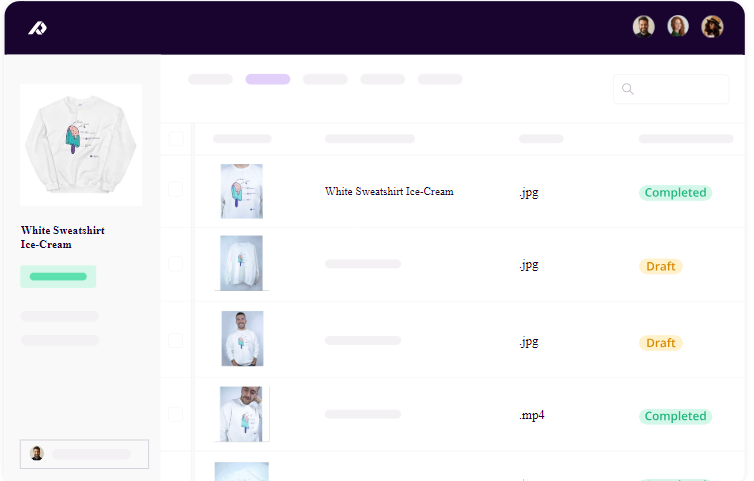
Plytix is a Product Information Management (PIM) software that allows ecommerce businesses to manage product information and release them into the market faster. Moreover, it is designed to manage product content at scale.
Key features
- Digital asset management
- User roles;
- Advanced filtering
- Product relationships
- Bulk product editing
- Completion tracking
- Changelogs
Pricing
Plytix does offer a free plan, but it’s limited to internal product assessments. If you need to connect this tool with other platforms, such as your web store or a marketplace, you need a paid plan, starting with Basic at $450/month for up to 10,000 SKUs and 50 GB storage.
Salsify
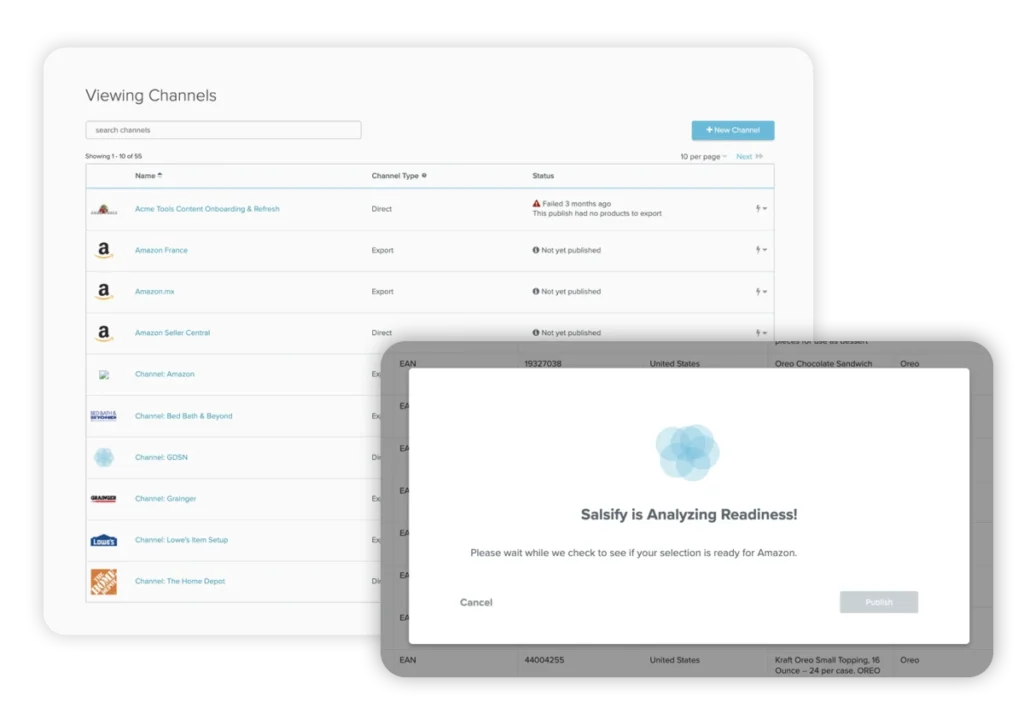 Salsify is another PIM software that helps ecommerce deliver great experiences to consumers while they shop online. Their biggest motto is being a tool that leads its users “to stand out on the digital shelf”. It centralizes your product management while allowing you to offer marketplace-specific options to your customers. This is a great option for companies that sell digital products across different markets and regions.
Salsify is another PIM software that helps ecommerce deliver great experiences to consumers while they shop online. Their biggest motto is being a tool that leads its users “to stand out on the digital shelf”. It centralizes your product management while allowing you to offer marketplace-specific options to your customers. This is a great option for companies that sell digital products across different markets and regions.
Key features
- Fast data imports
- Support to multiple data domains
- Content syndication
- Cross-channel analytics
Pricing
Salsify has not provided pricing information; therefore, it’s necessary to contact the sales team for a demo and quotes.
Syndigo Content Experience Hub
Syndigo Content Experience Hub is a platform that allows online retailers, distributors, and manufacturers to manage their product data and digital assets in just one place. It helps ecommerce brands to make sure that all their sales channels will have the same product information. Syndifo also offers training programs to optimize the platform for each business’ needs.
Key features
- Real-time benchmarking and analytics
- Digital asset syndication
- Global retailer ecosystem
Pricing
The company has not provided pricing information, so it’s necessary to contact them on their website.
Merchandising software
Also called e-merchandising, it’s the process of selecting and placing the right product or service on the website to help increase sales. This kind of software helps businesses strategically display products to promote them to ideal buyers. Its priority is to achieve high customer engagement and reduce the shopping cart abandonment rate.
This kind of software needs to have at least some of these features:
- Customer data collection;
- Real-time data to recommend bundle deals related to the current purchase;
- Functional search bar;
- Integration with payment gateways;
Unbxd
Unbxd is an AI-driven search platform that enables ecommerce businesses to engage their shoppers by building contextual relevancy into what they are searching for. It offers site search, browse (navigation), and recommendation purchase journeys to help businesses understand the customer’s intent.
At the same time, it makes the customer’s experience better by implementing personalized recommendations through data analysis.
Key features
- One-stop catalog manager
- Automated inventory and price updates
- Personalized recommendations
- Buyer’s journey reports
Pricing
There are different pricing tiers based on the amount of products you offer and the sales volume. To get the ideal quote, contact Unboxd’s sales team.
Algolia
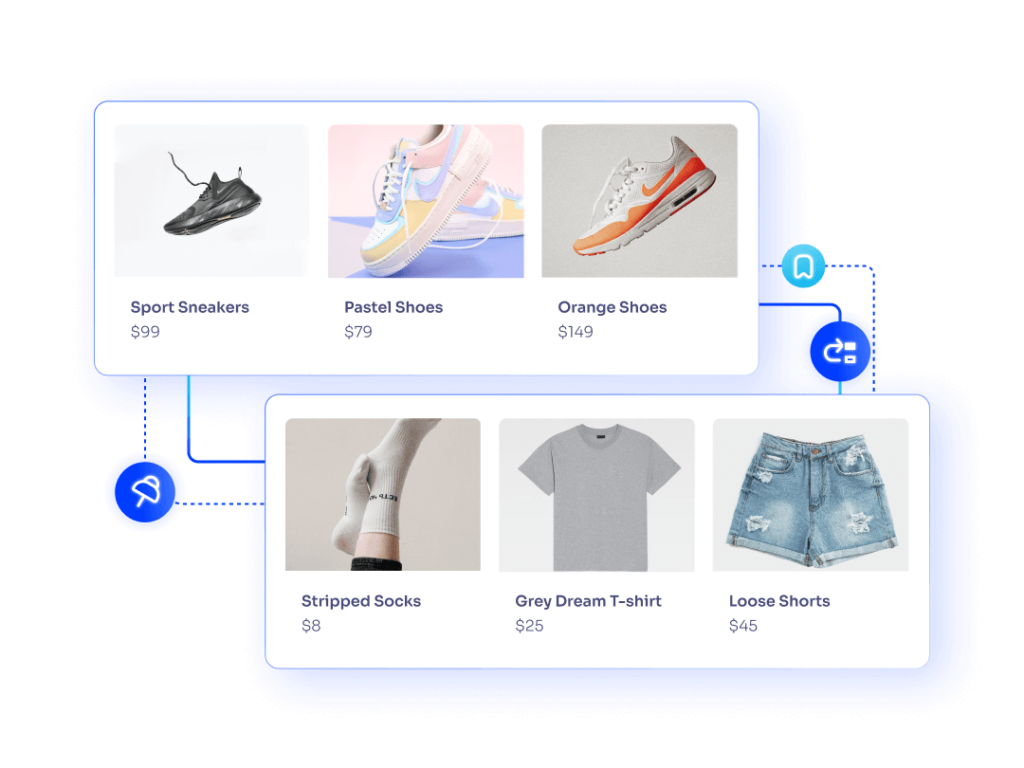
Algolia is a hosted search platform that maximizes search speed so that customers can browse ecommerce websites more intuitively. Besides, it offers an AI solution that helps to personalize the user experience on search, with features like dynamic synonym suggestions and neural language processing.
By using AI in sales, teams can grow their customer base and understand the market trends better. A tool like Algolia can be a great benefit to any starting business to develop cost-effective launches and campaigns.
Key features
- Advanced AI search tools
- Integration with Shopify, Magento, SalesForce, and other lead platforms
- Built-in search analytics
- Query categorization
- Promotional campaign manager
Pricing
Algolia provides a pay-as-you-go plan named Grow. It’s free up to 10k search requests/month and costs $0.50 per additional 1k search requests. It also allows up to 100k free records and the cost of extras is $0.40 per record/month.
Clerk.io
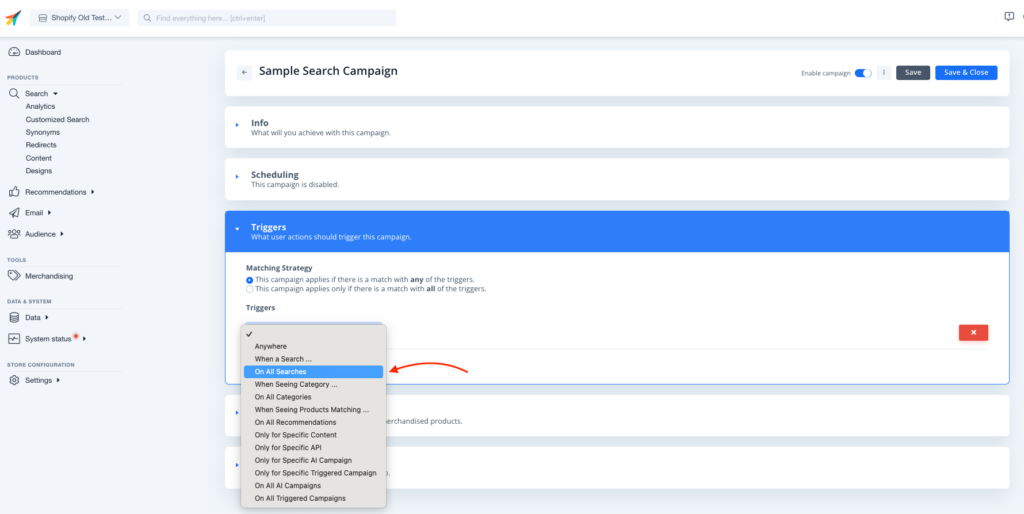
Clerk.io is an ecommerce personalization software that helps online stores acquire, convert and retain more customers through AI-driven technology. It automatically analyzes behavior, trends, and transactions to present shoppers with relevant search results, product recommendations, and the right messaging. You can optimize the search engine with triggers, synonyms and custom recommendations to offer a better user experience for your clients.
That’s why it can help ecommerce increase their sales: by helping customers find exactly what they want. Clerk.io claims to offer over 9x conversion rates. That, allied with better search options, contributes to higher ticket sales and customer retention.
Key features
- Customer data platform
- Predictive search engine
- Omnichannel integration
- Smart catalog connections
Pricing
Prices depend on the features and the number of resources you will use and the platform offers discounts for longer commitments. You can check the company’s pricing page to simulate how much it will cost you.
Ecommerce platforms
Ecommerce platforms allow businesses to manage all the operations they need to sell their products or services online. The main objective of an ecommerce platform is to centralize all the processes of the online store, including personalization, inventory and sales management, data collection, payment processing, and shipping.
Different platforms can be specific for B2C, B2B, or both. Each one of them will integrate with other essential tools for ecommerce, such as CRM software (for B2B) and inventory tools (for B2C physical goods);
Some of the characteristics and features an ecommerce platform must include are:
- Products and services management
- The ability to create customizable online stores
- Shipping estimates and partners
- Customer behavior tracking and management
- Security and encryption of data and information
Shopify
Shopify is a cloud-based, multichannel commerce platform suitable for small and medium-sized businesses. With Shopify, it’s possible to set up, design, set up, and manage your store across the web, mobile, social media, marketplaces, and many other channels.
Shopify is used across the world due to its flexibility and overall ability to cover most companies’ sales needs. Since you can build your website, set up secure payment systems and promote your products with integrations, even the least tech-savvy business owner can benefit from this tool.
Key features
- Customizable store themes
- Automatic carrier shipping rates
- Checkout recovery
- SEO optimization
- Inventory management
- Customer and sales analytics reports
Pricing
If you are a solo entrepreneur, the Basic Shopify plan will serve you with core features for $14/ month. The Shopify is the intermediary plan designed for small businesses and allows for 5 user accounts with the same features for $39/month. For custom reports and tools, the Advanced pricing tier is $299/month and includes 15 staff accounts.
FastSpring
FastSpring is an enterprise-level solution for a market share that requires global and flexible ecommerce tools. It’s completely focused on SaaS businesses and their specific needs to sell software globally, such as subscription management and billing in several currencies.
Key features
- Global payment processing
- Global taxes and financial services
- Risk management and compliance
- Fraud prevention
- Sales analytics
Pricing
There are three different plans. The free options allows up to two users and real-time analytics to see how your products are doing. For growing teams, you can select the Growth plan ($65/user/month) to set up price approval workflows, custom subscriptions and much more.
VTEX Commerce Platform
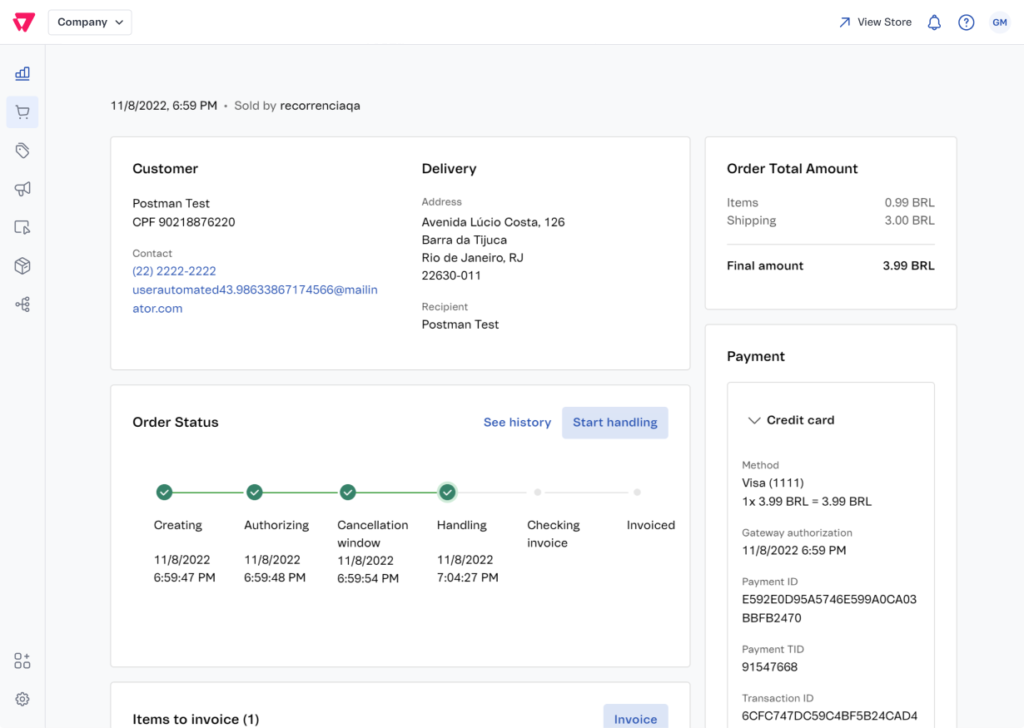
VTEX Commerce Platform offers ecommerce, marketplace, and order management resources in one single solution. It also can help brands, retailers, manufacturers, wholesalers and other businesses sell more, manage their accounts and give their customers the best experience on their websites.
You can view your entire inventory in one single place, manage orders, set up fulfillment systems and market your products, whether digital or physical goods.
Key features
- Storefront design tools
- Order fulfillment
- Payment processing
- Returns/refunds
- Inventory editing
Pricing
VTEX Commerce Platform is priced based on your company’s size and location. To get a custom quote, contact the sales office that oversees your region.
Picking the perfect ecommerce software
Although it may seem hard to choose ecommerce software, there are some tips you can follow to make this process more straightforward. Firstly, you need to determine what you are looking for in software and what needs it must solve. By knowing which features the software should offer, you can narrow down a fine list of options.
Secondly, don’t forget to use the available free trials and demos so you can truly understand how it works and how it will complement your workflow. You should also browse through customer reviews and ratings before committing to a specific platform or tool.
By determining which ecommerce software benefits your company the most, you can use it to its full potential, growing your customer base, closing more sales, expanding your brand recognition and generating more profit.
Turn Gmail into your Team’s Workspace.
- 2.5x faster email responses.
- 20 hours less spent per month, per team member.
- 40% more deadlines achieved and happier teams.


